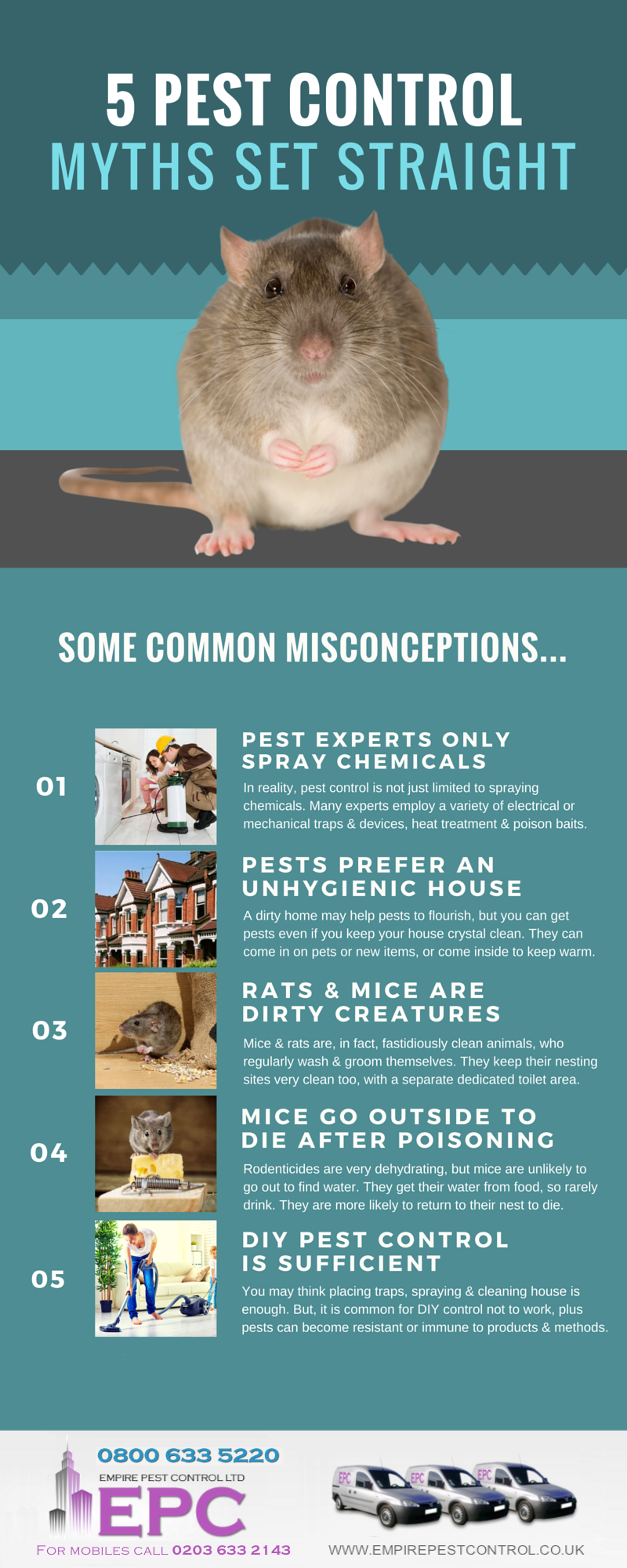Getting Expertise On Just How Rodents Act Is Crucial For Properly Controlling Pest Invasions. Experts Provide Beneficial Understandings On This Issue
Getting Expertise On Just How Rodents Act Is Crucial For Properly Controlling Pest Invasions. Experts Provide Beneficial Understandings On This Issue
Blog Article
Personnel Author-Medina Odonnell
Think of having the ability to expect the steps of your opponents in a video game of chess, always staying one step in advance.
simply click the next website page of pest control, comprehending rodent habits resembles having that critical benefit. By obtaining professional insights right into the nesting practices, feeding patterns, and communication and social habits of rodents, you can successfully deal with these pesky animals.
Yet how specifically do rats act, and why is it essential to understand? In this conversation, we will certainly unravel the mysteries of rodent habits, giving you with valuable expertise that will assist you remain in advance in the battle against bugs.
Are you ready to reveal the tricks of these shrewd animals?
Nesting Habits
To understand rodent habits and effectively control pests, it is necessary to get insight right into their nesting practices.
Rodents, such as mice and rats, have a natural instinct to discover shelter and produce nests where they really feel risk-free and safe. These nests function as their homes, breeding grounds, and storage areas for food. Recognizing their nesting routines can help you recognize prospective areas of invasion and carry out targeted control procedures.
Rats generally like nesting in dark, remote areas, such as attic rooms, cellars, crawl spaces, and wall surface gaps. They use products like shredded paper, fabric, insulation, and even chewed-up electric cables to construct their nests.
Feeding Patterns
Rodents exhibit distinctive feeding patterns that play a critical role in their actions and can notify efficient parasite control strategies. Comprehending these patterns is important for implementing successful insect control steps.
Rodents are opportunistic feeders, indicating they'll eat whatever food is easily offered. They like high-calorie foods such as grains, nuts, and seeds. This is why correct storage of food and waste monitoring are vital in protecting against rodent invasions.
Furthermore, rodents are nocturnal, which indicates they're most energetic throughout the night when they look for food. By understanding their feeding patterns, you can tactically position traps and baits to maximize their efficiency.
Keeping food sources hard to reach and preserving a tidy setting can assist prevent rats and reduce the threat of invasion.
Communication and Social Behavior
Recognizing just how rats communicate and interact socially is essential for reliable parasite control approaches. Rodents, like computer mice and rats, have intricate communication systems that they use to communicate information to each various other and collaborate their activities. Right here are three crucial elements of rodent interaction and social behavior:
1. Vocalizations: Rodents generate a variety of singing sounds, consisting of squeaks, tweets, and babbling, to connect with each other. These articulations can convey numerous messages, such as threat warnings or mating calls.
2. Scent noting: Rodents make use of scent glands to leave chemical signals on objects and in their setting. local exterminators for mice work as territorial limits and interact information concerning reproductive condition, supremacy, and social association.
3. Social hierarchy: Rodents have a hierarchical social structure, with dominant individuals having access to sources and liked nesting sites. Comprehending this pecking order is important for targeting pest control efforts and identifying key individuals for removal.
Conclusion
So, there you have it - a short peek right into the remarkable world of rodent behavior. By understanding their nesting habits, feeding patterns, and communication, we can much better deal with the issue of bug control.
Did you recognize that a women mouse can create as much as 10 litters each year, with each clutter consisting of around 5-6 pups? This astonishing fact highlights the significance of punctual and efficient pest management to prevent rodent populations from spiraling out of hand.
